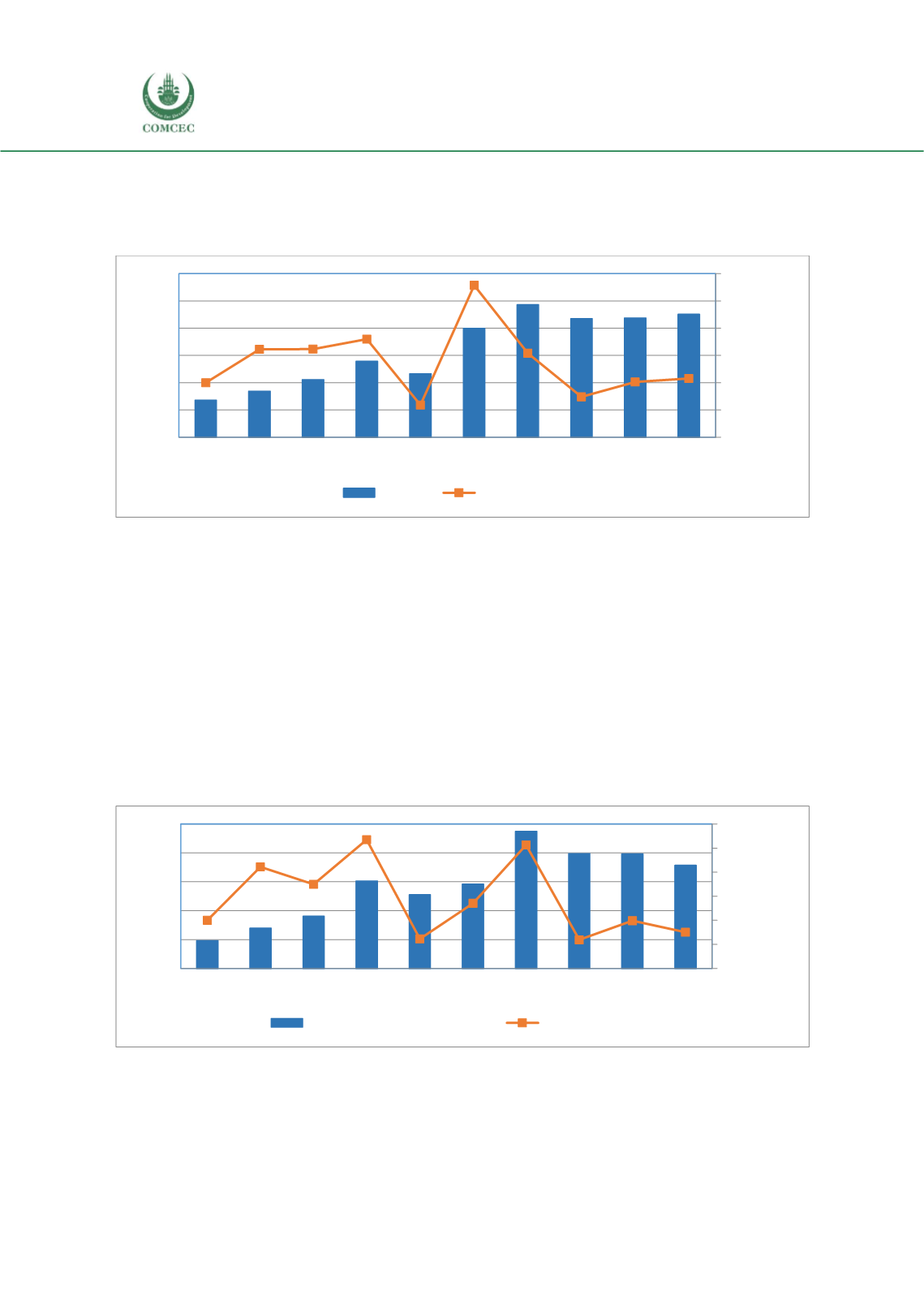

Analysis of Agri-Food Trade Structures
To Promote Agri-Food Trade Networks
In the Islamic Countries
68
Kingdomwere the top 10 import sources of cotton for Bangladesh during the 2005-2015 period.
Among these countries only India, Uzbekistan and United Arab Emirates (likely misidentified
re-exports) provided more than 50% of cotton import in 2015.
Figure 34: Trend of Cotton Imports of Bangladesh: 2005-2015, Million USD
Source: UN Comtrade retrieved through WITS.
Palm oil and soya bean oil together represent more than one quarter of Bangladesh’s total
agricultural imports and their imports increased significantly (more than four times) over the
last 10 years to meet the increasing internal consumer demands. Indonesia and Malaysia were
the two main import sources of these import products for Bangladesh. Over the last 10 years,
more than 85 % of Bangladesh’s total imports of Palm oil and Soya bean oil were sourced from
these two countries, and more than 50% was sourced from Indonesia alone. However the
growth trends of these two items were also quite uneven during this period of time (Figure 35
and
Figure 36). Imports of oil seeds (mainly rap seeds, mustard seeds and canola seeds) also
registered substantial growth during the 2005-2015 period from only 75 million USD in 2005
to 565 million USD in 2015, and mainly sourced from Canada, Argentina, United States and
Australia.
Figure 35: Trend of Palm Oil and Its Fractions Imports of Bangladesh: 2005-2015, Million USD
Source: UN Comtrade retrieved through WITS.
-40%
-20%
0%
20%
40%
60%
80%
0
500
1.000
1.500
2.000
2.500
3.000
2005 2006 2007 2008 2009 2010 2011 2012 2013 2015
Growth rate (%)
Cotton
Growth Rate (%)
-40%
-20%
0%
20%
40%
60%
80%
0
500
1.000
1.500
2.000
2.500
2005 2006 2007 2008 2009 2010 2011 2012 2013 2015
Growth rate (%)
Palm oil and its fractions
Growth Rate (%)
















